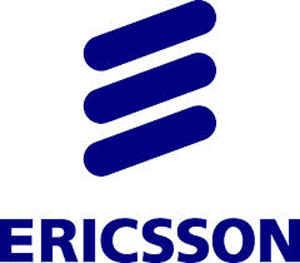 Last week Ericsson published the latest edition of its Mobility Report which takes a close look at mobile communication trends in various regions.
Last week Ericsson published the latest edition of its Mobility Report which takes a close look at mobile communication trends in various regions.
The report for Sub Saharan Africa was focused on the growth patterns in the region which is recognised as a leading zone in the progression and uptake of mobile services.
In the report there was a look at the explosion in mobile communications in the Sub Saharan region with mobile subscriptions set to reach the 635 million by the end of 2014 and 930 million by 2019. Through the uptake of digital services, chiefly mobile banking, there is a healthy acceleration in mobile growth which has changed the socio-economic narrative for the region.
The transformation of mobile communications from basic voice and text services towards data enabled services was highlighted in the report, with one section focusing on the key drivers for mobile broadband growth.
The drivers listed are Devices and Local Content, ICT in Key Economy Sectors, National Broadband Policies and High Performance Networks. Each factor has had a huge bearing on every Sub Saharan country’s efforts at progress in the broadband arena with Zimbabwe being no exception.
By examining each factor it’s easy to see what advances are being made and what would need to be addressed to hope for serious progress in broadband and tech. The responsiveness to one or all these factors has managed to display the growth potential of broadband services in each country and the same applies for Zimbabwe.
Looking at Devices and Local Content it seems this factor is one that Zimbabwe has managed to consider and address effectively. With relaxed import duties on mobile devices and huge initiatives to distribute entry level smart devices being carried out on a massive scale, like what Econet is carrying out, the cheap access to data enabled devices has thankfully been made so much easier.
The local content aspect seems to be showing promise when you consider how we have a huge appetite for our own material as highlighted in other tech reports. Sadly this has not been enough to ensure a larger revolution in this arena as production of local content is still subdued. Perhaps this just might be spurred if we have an adoption of suggestions to zero rate local content in the same way that MOOCs were dealt with through Econet Zero.
The ICT in Key Economy Sectors factor is focused on ICT inclusion in many industries and sectors with the aim of boosting efficiency. This has been noted in some industries such as financial services, agriculture and insurance. Locally the introduction of mobile money has meant financial inclusion which sets a base for several other services and opportunities in areas such as e-commerce.
More work still needs to be done to recognise how broadband can be integrated into service delivery for other sector, something that also dovetails with the need for local content creation. It basically comes as a wake-up call to startups to venture into the creation of solutions in areas that have been neglected.
The factor of National Broadband Policies is centred on how the right legislative policies propel broadband growth. While countries like South Africa have managed to craft Broadband policies that address issues regarding in an integrated solution to broadband growth this is one sector that still needs attention from the Zimbabwean perspective.
Issues such as shared infrastructure, broadband pricing models and penalties for bad practices as displayed through monopolistic behaviour need to be tackled legislatively with the regulator taking charge here.
If the remarks made recently by representatives of POTRAZ at different platforms such as the Broadband Forum point are anything to go by, the level of engagement between the State, the Regulator and service providers suggests that something is being worked on regarding this.
While we applaud how the Zim ASSET blueprint was crafted with an intent to factor in IT as a part of the national turnaround plan the best approach is to watch patiently to see how this will be enacted.
There have been engagements like the Public ICT Forum which have been used as platforms by the government to showcase how partnerships with firms like Huawei will mean greater success in public ICT projects. This is meant to reinforce Zim ASSET’s recognition of tech in national recovery and hopefully action will be taken beyond the politicking.
The factor of High Performance Networks emphasises the need for improving user experience through better service delivery from the various operators. This is supposed to be made possible through added investment locally and regionally.
The biggest issue here is smarter investment which means that synergies are formed between different role players in service delivery so that whatever is being invested is used more effectively. Locally this calls for more collaborative strategies to allow better use of something core to delivery like infrastructure.
There is definitely a host of opportunities that broadband will bring and as something that plays a big role in economic growth and advancement every factor that weighs in on broadband should be considered carefully and acted on as well.
